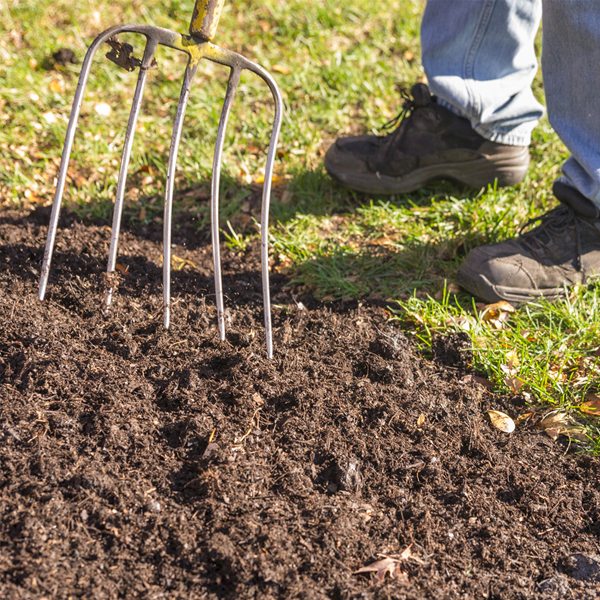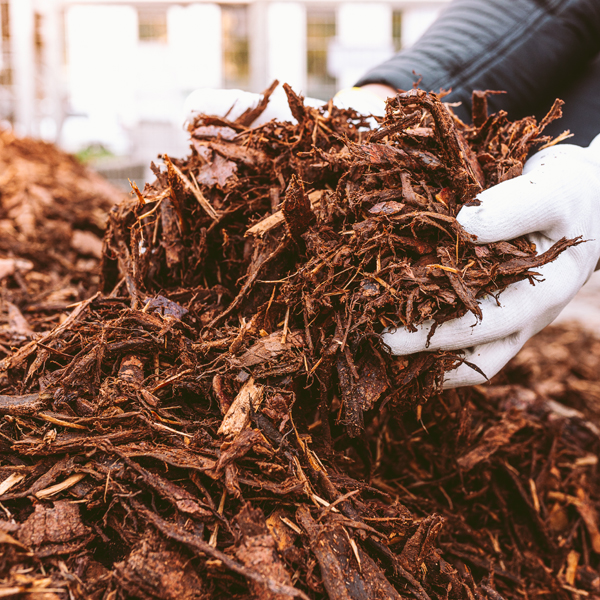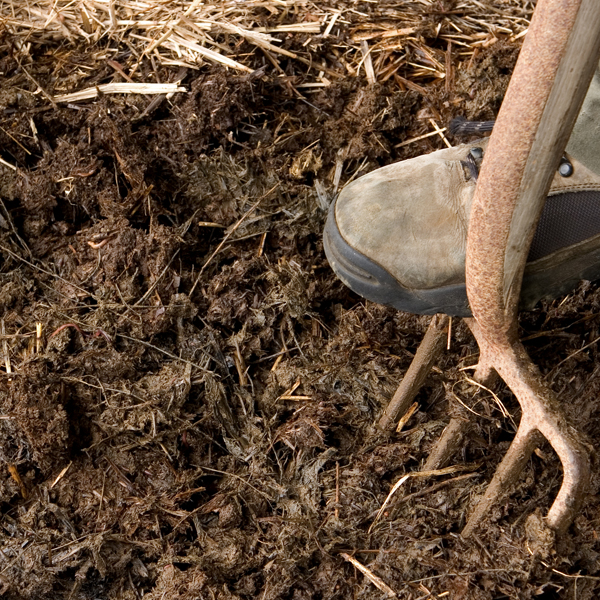Types of Mulch
Garden centers and big-box stores offer mulch made from a variety of materials.
Shredded bark from cypress, pine, and cedar, wood chips, cocoa hulls, recycled wood, and mushroom compost are some of the products sold by the bag. Many garden centers also sell and deliver mulch by the cubic yard. Beware of colored mulch in shades of red, black, and brown that contains chemicals that can leach onto nearby pavers and sidewalks. Rubber “mulch” might be good for playgrounds under swings and slides, but it’s not helpful for perennials, trees, or shrubs. Unlike organic mulches that break down and provide nutrients, rubber won’t do that. Neither will rocks or stones that are sometimes sold for mulch purposes. You can use your own compost, shredded leaves, untreated grass clippings, or soilless potting mix from your containers when you empty them this fall.



Benefits
When the garden “sleeps” in winter, mulch helps define beds and borders. But there are other ways that mulch helps plants throughout the year. Many traditional plantings have unfilled niches and open soil, allowing sunlight to directly reach the ground. Any bare soil is a welcome mat for seeds—just look at any empty lot where weeds fill the cracks. In the summer, a layer of mulch helps to suppress some weeds and may deter weed seeds from germinating. When weed seedlings do pop up in mulch, they’re easy to remove. Mulch also helps conserve moisture by reducing evaporation and helps to regulate soil temperature. A layer of mulch around trees helps prevent damage from string trimmers and lawn mowers. As it decomposes, mulch helps to improve the soil by adding organic matter.
How to Mulch
While a light blanket of mulch is a good thing, piling on more than 4 inches is not necessary and can be harmful. Keep all mulch several inches away from tree trunks and avoid spreading it over crowns of plants. Piling mulch against tree trunks promotes disease and insects and offers mice and other rodents an opportunity to chew on the bark. Piling wood chips around the base of a tree into a conical mound results in a “mulch volcano” that holds moisture against the bark. Over time, it can soften the bark and cause rot. Don’t pile it on!
Do the Mulch Math
“Plants are the best mulch,” says landscape designer Claudia West, who recently spoke at the Garden. “Filling the spaces benefits the entire planting,” she explained.
West co-authored the book Planting in a Post-Wild World: Designing Plant Communities for Resilient Landscapes with Thomas Rainer. While some gardeners like the look of their plants standing alone, the bare soil between plants invites weeds, she said. Even if you use mulch between the plants, it eventually decomposes and needs replacement. Letting plants mingle and touch one another eliminates the need and expense of mulching and inhibits weeds.
Nina Koziol is a garden writer and horticulturist who lives and gardens in Palos Park, Illinois.

